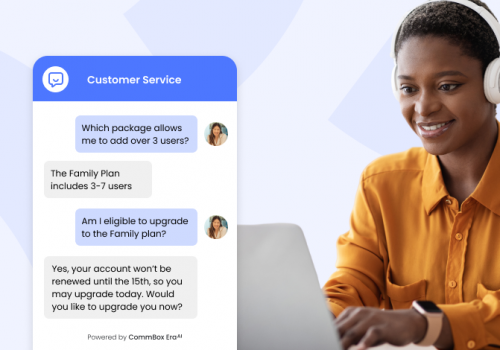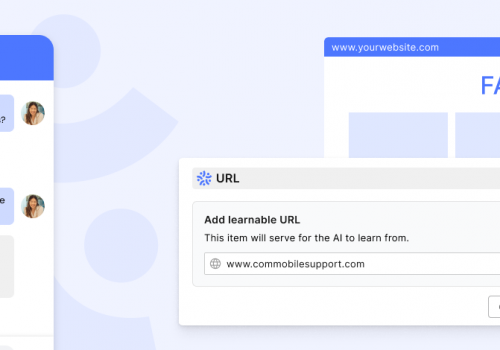SDR Team. Sales Development Teams are crucial to the success of many businesses. They help drive conversion by utilizing a fast and standardized lead follow up process. They present more sales opportunities for the company. They align well with the sales and marketing teams, often bridging the gap by nurturing closer relationships and always following up on leads. And as specialized and highly skilled sales staff, they meet their quotas and generate tons of revenue for the business.
As with most specialized teams, it can often be challenging to drill down and decide the most important things to focus on. That’s why we’ve put together a list of top 5 focus points for the SDR team. Let’s take a look.
5 Things SDRs Should Focus On
1. Finding The Balance Between Manual and Automated
Sales development representatives can utilize many channels to nurture leads through the sales funnel. They can use manual channels like phone calls, live chat, social media interactions, or they can use automated channels like drip emails. Drips emails are a marketing strategy where potential leads will be “drip” fed emails over time. The emails are usually sent at specific times and dates, and the aim is to entice the prospect to engage with the company or buy a product.
It’s essential to strike the right balance between manual and automated channels. If SDRs focus too much time on manual channels, they might become overwhelmed and run out of time to spend on other tasks. However, if they rely too heavily on automated channels, the communication can lack that “human” component necessary to nurture leads.
SDRs can combat this by implementing a repeatable sequence of actions to use for every lead. For example, the sequence might look like this.
Day 1: Social Media, Email, Phone Call
Day 4: Email
Day 7: Phone call, Voicemail
Day 10: Email, Social Media
Day 14: Email, Social Media
Day 18: Phone call, Voicemail
Day 20: Email, Phone call, Social Media
You don’t have to follow this sequence strictly. Every business is different, and your sequence should reflect the length of your sales cycle and the workload of the SDRs in your company.

2. Meeting Their Quota
This one may seem obvious, but quotas exist for a reason, and it’s crucial to keep that reason at the forefront of your mind when running an SDR team or fulfilling an SDR role.
Quotas are usually designed around three factors: activity, opportunities, and revenue.
Activity
Activity quotas aim to encourage a set number of actions. In this case, activity is anything the rep does as part of their job and something they have complete control over. For example, it could be the number of calls they make, the number of emails they send, or the number of new prospects they secure. Activity quotas are best used when you want to encourage more activity from your SDRs because they have a too-narrow focus. For example, some SDRs might be whale hunting (only going after high-value targets). There’s nothing inherently wrong with this, and in fact, it might be encouraged in some companies. However, it doesn’t work for every business, and it can lead to long periods with very few closes.
Opportunities
Opportunities can mean different things to different businesses, depending on your sales cycle. However, generally speaking, this category is intended to assess (and reward) the opportunities individual reps bring to the company. Or, to put it another way, the value they add in terms of the opportunities they bring in. For example, if a rep has a Demo or meeting booked in, this can be seen as an opportunity.
It can make sense to use this opportunity quotas if you have a bustling SDR team where team members often help each other with tasks. This way, SDRs are incentivized to keep nurturing prospects, even if they know they can’t be present for the meeting or Demo, and it will need to be handed to another rep. It can also make sense if you have a long sales cycle because it rewards representatives for their continued contributions on the way to a close.
However, it doesn’t make sense to use opportunity quotas if you have very short sales cycles or if your SDRs close nearly every opportunity (revenue quotas makes more sense in this case).
Revenue
This one is simple: how much revenue your SDRs create or add to the business. Revenue quotas are most effective in short sales cycles because you can usually directly die the SDR’s efforts to close. With very long cycles, it can be much more challenging to do this and get complex. However, it can still be done.
The math involved in setting quotas can be pretty tricky if you want to do it properly, so it’s not a topic for this article. However, there are two things you need to take away from reading this section:
- Decide what quotas you should use. If you already have quotas, decide whether they are working for your business and whether they need some tweaking. You could try a combination of different quotas to drive better results.
- Quotas must be achievable. Too many businesses have ambitious plans and set exceeding high quotas for their SDR team. This can actually impede productivity and success. To be motivated, you have to believe something is possible, that it’s within reach if you just work a little harder. But if every day for an SDR feels like they are climbing Everest and they’ve run out of oxygen tanks, they’ll become demotivated quickly.
3. Video Prospecting
It’s 2020, and videos are the preferred form of content for most users. SDRs should capitalize on this by getting comfortable in front of a camera. This means creating small and quick videos using webcams and screengrabs. SDRs should be comfortable making a 2-minute video where they introduce themselves and the company and deliver value (for example, with a quick tip), and ask to schedule a call or meeting. It’s essential to look into the camera, speak clearly, talk with a smile, and keep it short. No one wants to want a long and drawn out sales pitch.
Many SDRs overlook the importance of video in the digital era and prefer to default to voice or text-based communication means. Remember, almost every company will already be doing that. In 2020, people are inundated with calls and emails, and it’s difficult for any company to stand out. Well, this is your chance to stand out and offer a more personal spin.
4. Quality and Customization vs. Time
When it comes to successful outreach, quality and customization are essential. It should come as no surprise that the more personalized a communication is, the more likely you are to get a response. People hate canned communications that lack any feel for the person behind them. They also hate to feel like they’re just another number in a long list of people that SDR has to contact that day (even if that’s true).
However, just like in the first point, striking a balance is essential. SDRs don’t have all the time in the world to craft long personalized emails or learn everything about each lead. Time management is a key part of the job, and SDRs have to master this skill early on.
So, how do you strike this balance? Well, for new SDRs, quantity is probably more important than quality. New SDRs need to experience a high volume of calls, email, and in-person communications to develop a “muscle memory” or what to say and what not to say. They need to hear the common objections and learn how to respond to them confidently, turning the situation around. When SDRs lack experience in this area, they can stumble at every hurdle. This can happen whether they use personalized communications or not, so it’s an excellent experience to go through.
With more experienced SDRs, they can afford to spend more of their time writing high-quality personalized communications.
5. Active Listening
Active listening is absolutely essential for SDRs. SDRs must be highly attuned to what the prospect is saying and how they reflect their intentions. You can gather a surprising amount of information by looking for subtext and reading between the lines when really listening to someone. If you’re not actively listening, you can open yourself up to being surprised when the situation doesn’t work out how you hope. Active listening is also crucial for developing bonds with prospects and building a rapport.
Here are some top tips on active listening:
- Give undivided attention – To actively listen, you can’t be distracted. You can’t be reading something on your computer or mouthing something to your colleague. You have to focus on each and every word.
- Show that you’re listening – Reiterate what the customer has said (repeat it back to them). Use gestures like nodding or facial expressions if you’re in person.
- Defer judgment – Don’t interrupt the speaker to say your piece. Let them speak until they’ve finished speaking, only interrupting to offer encouragement. Don’t interrupt their flow with counter-arguments even if you plan to counter their points later on. If you interrupt to counter them, they will immediately feel defensive and become emboldened.

What Makes a Great SDR Team?
Any company with an SDR team wants their SDR team to thrive. They want a high performing team that delivers results every time. So, what makes a great SDR team?
- Talent – The best SDR teams have the best people in them. These people are highly social, adaptive, resilient, and much more. You can nurture these qualities in your existing staff or hire from the outside.
- Consistency – They have to drive results consistently by replicating a well-engineered sales process.
- A culture of improvement – Do you know you should never hire? People who already think they’re the best and have nothing more to learn. The best of the best in any industry are people who are always striving to improve. They are people who seek out feedback. They are people who study in their own time or ask for more learning opportunities. And they are people who want to see their teammates improve and succeed alongside them.
- Team goals – The best SDRs understand that the team’s success is what drives their individual success. They want to see the team succeed.
- Fun – Stress is a part of the job, and SDRs who don’t know how to unwind and have fun while at work will become overburdened with stress. The best SDRs enjoy what they do, and they have strong relationships with the other SDRs on their team.















